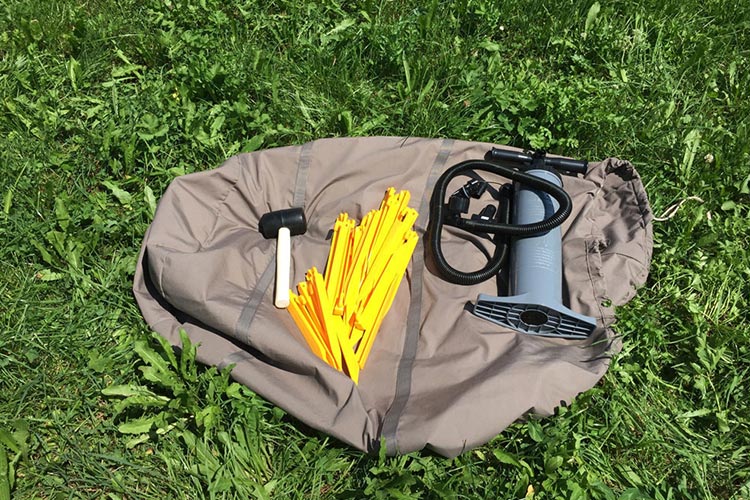
If you enjoy the great outdoors then the chances are you get a little dirty and the same can probably be said for your kit, especially your sleeping bag.
Whether you’ve had to sleep on the trail, dropped it or got mud all over yourself after trekking through rough terrain, your sleeping bag can get dirty easily. Added to this that regular use - much like your clothing - can see a build-up in odour and grime, regular cleaning and care of your bag will avoid having to replace it.
From patching tears or holes to washing and even waterproofing, you can care for your sleeping bag in the same way as your coats to ensure longevity. Winfields Outdoors has made this handy guide to washing and protecting your sleeping bag to make sure it lasts for many years and adventures to come.
Read on to find out the tips and tricks when it comes to cleaning, waterproofing and repairing your sleeping bag…
Caring for your sleeping bag
When it comes to caring for your bed-from-home to ensure it’s good to go for your next camping trip, expedition or Duke of Edinburgh, there are a variety of steps you can take.
From use to storage and repairs, we’ll guide you through numerous tips to make sure you get the best night’s sleep in warmth and comfort.
On-site Care
When you’re at the campsite, you can take steps to keep your sleeping bag as clean and fresh as possible. Even if you are on a long expedition of DofE, some of the below tips will come in handy when it comes to using your bag time and again.
Mats & Ground Protection

No matter what, using a sleeping mat is important when camping, whether you’re in a tent on a campsite or roughing it on a trail. Putting some sort of padding down on the ground first will not only help to keep you warm but provides a barrier to rocks and sticks that can pierce or tear your sleeping bag. Furthermore, it’ll keep your bag from getting wet on damp ground.
Read more: Camping & Airbeds Buying Guide
Clean Clothing
This is easier if you are staying at a campsite rather than on DofE but try to wear clean clothing each time you go to bed. Body oils, sweat and dirt can build up over time which can degrade the insulating abilities of your sleeping bag. Whether it’s warm or cold outside, having a change of clothes for sleeping will reduce the amount of dirt in your bag.
Lining
A sleeping bag liner has two benefits; it provides additional warmth to your bag and acts as a barrier between you and the bag. So, any moisture you produce, such as sweat, is caught by the liner rather than the sleeping bag material. This ensures less dirt is captured by the bag, prolonging its life and the effectiveness of the insulation.
Air it Out

After each sleep, it helps to air out your sleeping bag to dry out any moisture or remove any odour after a day of hiking. If your bag has gotten wet, you may need to air it out for a few hours on-site - if you can. However, don't leave your sleeping bag in direct sunlight for too long, as UV light can degrade the fabric over time. Always turn your bag inside-out for airing it out.
Back Home Care
When you get home from a camping trip, it helps to check your sleeping bag thoroughly for tears and holes. Insulation can move around, but there are other steps you can take to ensure longevity and effectiveness for your bag.
Tears & Holes
These can happen on-site, and you can always patch it before you get home. However, when you get home, you have two options - sewing or tape. You can sew a tear back together with a needle or sewing machine if you’re confident enough. For tape, cut a circular shape so no corner can be picked. Leave up to 2.5cm of excess tape around the tear to be safe.
Peel the back layer of the tape off and place it over the tear. Press from the middle of the tape out, making sure to smooth the fabric and remove any air bubbles.
Waterproofing
The DWR (durable water repellent) finish on a sleeping bag will eventually wear off - which can take years, depending on your usage. You can restore water-repellent qualities and keep your bag cleaner by restoring the DWR through reproofing. Similar to reproofing a jacket, Nikwax and Grangers are the leading products and can be done in a washing machine.
Read more: How to reproof a waterproof jacket
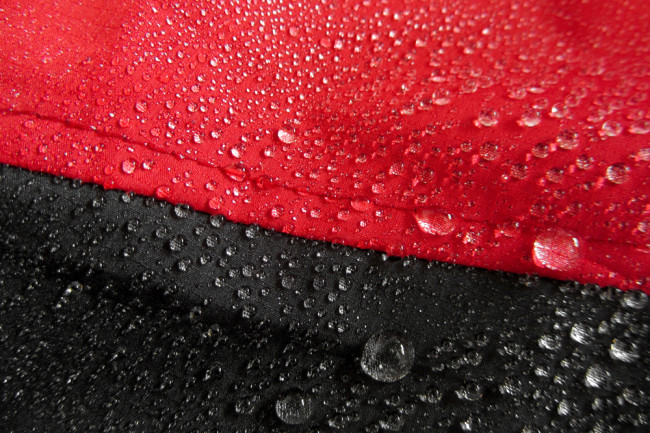
Restoring and revitalising the DWR can be done at the same time as washing your bag with many cleaning products including a reproofing agent.
Storage
Storing a sleeping bag helps enhance its lifespan, so it’s best to store it somewhere other than the stuff sack it came in. The reason for this is that being compressed in the sack can damage the filling - down or synthetic. Once you’ve aired the bag out, store it in a large, loose cotton bag or large mesh bag to allow the sleeping bag to breath. A pillowcase will also work well.
How to clean a sleeping bag
When it comes to cleaning your sleeping bag, you can do spot cleaning - using a brush on small sections, a full wash in a machine or by hand.
There are some key things to remember when it comes to cleaning a sleeping bag, but most of all, you should not do the following:
- Don’t dry-clean your sleeping bag - solvents used in the process can damage down and synthetic fillings.
- Don’t use fabric softener, bleach or alternative-bleach products as these can damage the sleeping bag.
Spot Cleaning a Sleeping Bag
You won’t always need to give your sleeping bag a complete clean in a washing machine or bathtub - you can make it look as good as new with a brush.
A full wash can cause wear and tear, decreasing the loft and insulation of the bag, so spot cleaning is your first point of action. Besides small sections of dirt or mud that may have found its way onto the bag, you should focus on the hood and collar. This is where hair, sweat and skin oils will build-up the most.
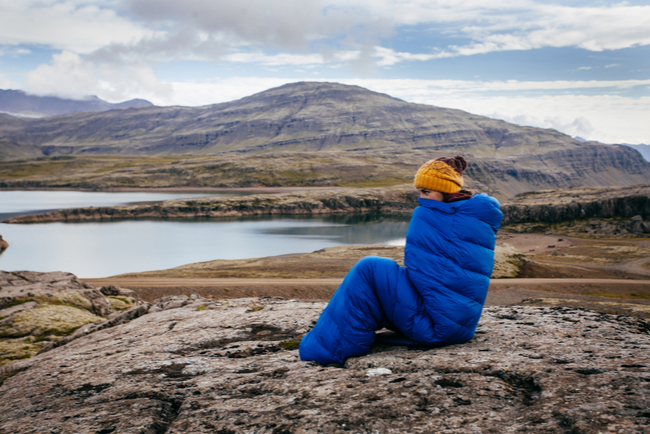
Make a mix of non-detergent soap with water and then use a small brush - such as a clean toothbrush - to apply it to the dirty areas of your bag. Gently brush the mixture and then rinse it off. If you manage to hold the shell away from the insulation, you’ll avoid getting the filling wet, which can reduce the drying time.
Hand Washing a Sleeping Bag
To hand-wash a sleeping bag, you’ll need to fill a bath with warm water and a mild fabric soap or specialist cleaning agent for your down or synthetic bag.
For synthetic bags, products such as Nikwax’s Tech Wash or Granger’s Performance Wash, will clean the sleeping bag and restore the DWR or waterproof qualities.
Make sure all zips, pockets and Velcro are fastened on the bag and then lay it in the bath as flat as possible. Gently massage or knead the water into the sleeping bag with your hands until the bag is saturated.
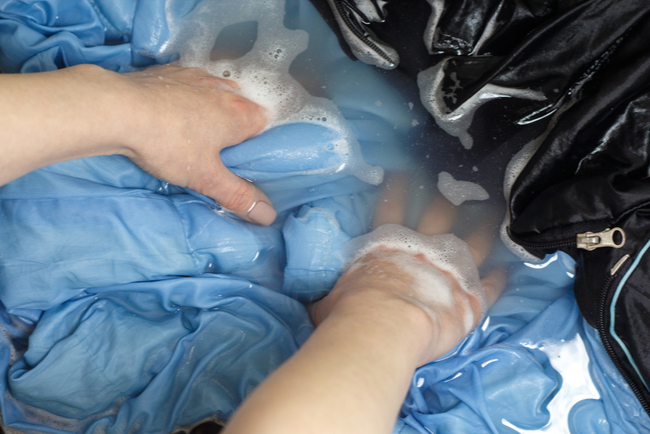
Depending on how dirty your bag is, leave it to soak for anywhere between one and four hours. Then, drain the water from the bath and fill it up with fresh water. Like before, massage the water into the bag again until there aren’t any soap suds visible on the bag or in the water.
Drain the water from the bath and gently press the sleeping bag to remove any remaining water. Roll up the bag or fold the edges in and then press it down to remove water. Do not twist or wring the sleeping bag to remove water as this will affect the filling.
To dry the sleeping bag, you can put it on a low setting in a tumble dryer if the product instructions allow for it. Alternatively, you can air-dry the bag. Lay it out flat on towels over clothes racks or hang it in a shaded area out of direct sunlight. Dry and windy weather are the perfect conditions for air-drying a sleeping bag.
Remember, excessive exposure to UV can degrade the bag’s nylon shell fabric.
Machine Washing a Sleeping Bag
Before you put your bag in a machine, make sure all zips and Velcro tabs are secured but don’t zip the bag all the way up. Grab your cleaning agents, like the Grangers or Nikwax products above.
You may need a specialist product for down fillings - Grangers’ Performance Wash works on synthetic and down fillings.
Put your bag in the machine and add your cleaner - the heavier the bag, the more cleaner you’ll need - and set the machine on a gentle cycle at no more than 30℃.
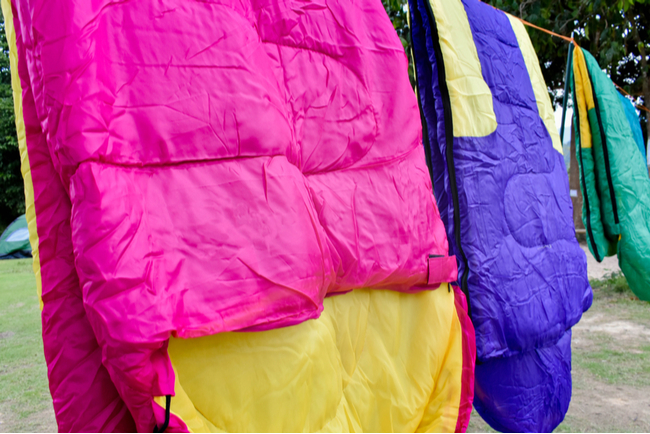
A handy trick - especially for down-filled bags - is to put a towel or clean tennis balls in with the bag so the filling is evenly spread and doesn’t get lumped together.
Once the cycle is done, take the bag out of the machine and press down on it. If soap suds appear, you’ll need to put it back in the machine on another rinse cycle. Use an extra spin cycle to remove excess water from the bag to avoid this happening.
Once all the suds are gone, dry it as you would above.
Take a look at our full range of sleeping bags or entire sleeping equipment collection including:
Sleeping Mats | Sleeping Bag Liners | Camp Beds | Airbeds
Read more from the Winfields Blog to set you up for 2020...
⛰ 🏕 🌳
Don’t forget to take a look at our camping blog for more posts like these…
The Best UK Campsites To Stay At in 2020 | Camping Gas & Stoves Buying Guide | Rucksack & Daysack Buying Guide










